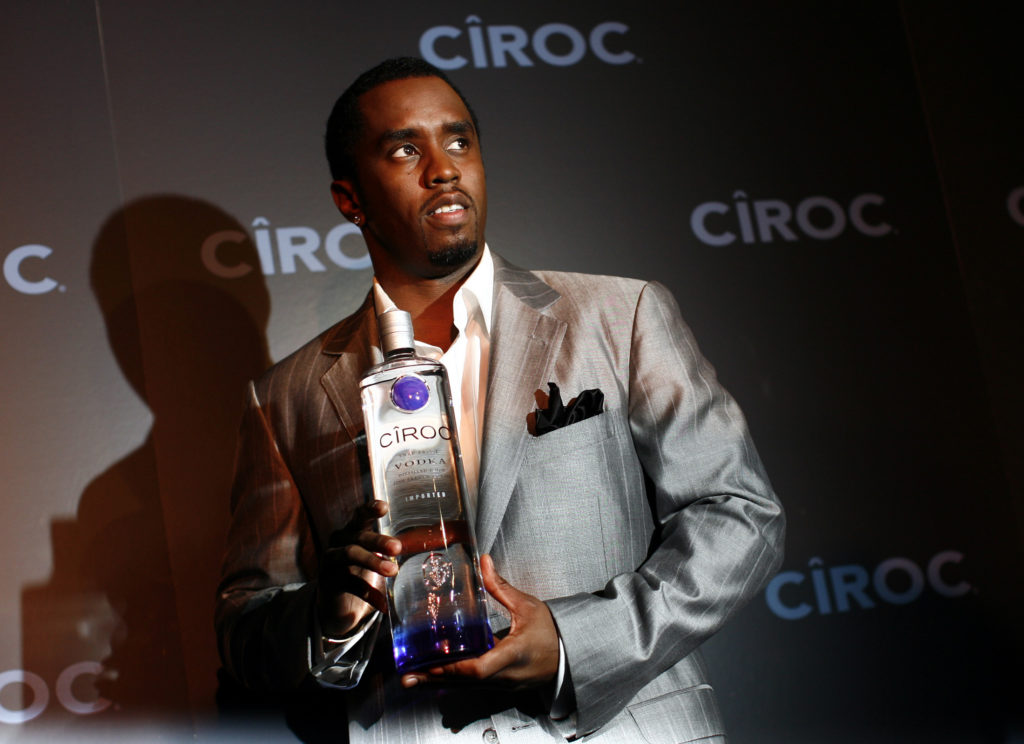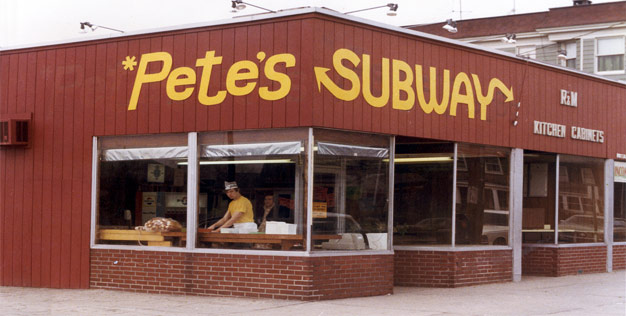Marketing Guides
Strategic Planning
Rebranding – How to Rebrand a Company, Product or Service Effectively
Considering a rebrand? Rebranding your company, product or service can be one of the most important decisions you make as a strategic marketer or entrepreneur. A successful rebrand can allow you to access new markets, win new mindshare, increase your top and bottom lines and build powerful brand equity.
Rebranding requires a tremendous amount of work. Before we dive into the step-by-step rebranding process, let’s take a look at some examples of successful, and unsuccessful rebrands.
Successful Rebranding Without Changing the Brand Name
Target
Twenty years ago, Target was a commodity discount retailer that was undifferentiated from the likes of K-Mart, Sears and JC Penny. To separate from the cutthroat world of competing on the basis of price, Target began creating partnerships with designers like Missoni and Alexander McQueen, becoming affectionately known as “Tar-zhay” for the chic discount offerings and growing to be second only to Walmart in its market share.
Apple
Nearing bankruptcy in the 1990s, having become a niche computer manufacturer for designers and schools, Apple rehired founder Steve Jobs and refocused on style, introducing the iMac and killing their PC-like beige box computers. While not a typical rebrand handled by an agency, Job rebranded the entire company by focusing on innovation and creating completely new products and services, turning Apple into one of the world’s most valuable companies.
Ciroc
Vodka is practically a commodity; taste tests show that most consumers can’t differentiate their product in blind taste tastes. Thus, many vodka brands differentiate via their brand positioning. Ciroc was initially launched for the North American market in 2003 and marketed to nightclubs and entertainment venues in the U.S., with a heavy focus in Atlanta and Miami. Sales struggled. Brand owner Diageo, owner of brands such as Johnnie Walker, Guinness and Sterling Vineyards wines, partnered with Sean Combs in 2007, giving him the lead on all brand management decisions for Ciroc and sharing the future profits of the brand growth with him. Combs’ personal style and creativity propelled Ciroc sales from 40,000 cases per year in 2007 to 2,100,000 cases per year in 2012.
Successful Rebranding with a New Brand Name
SUBWAY – from Pete’s Super Submarines
In 1965, Pete’s Super Submarines opened in Bridgeport, Connecticut. A year later, it changed the name to Doctor’s Associates Inc., after co-founder Dr. Peter Buck, a nuclear physicist. After little success under the two previous names, Buck and co-founder Fred DeLuca gave it a third try using the name Subway. Today it’s the world’s largest submarine sandwich brand with over 40,000 locations around the world.
PayPal – from Confinity
Before it was called PayPal, the company was called Confinity – a name representing the merged words of “confidence and infinity.” While the company’s initial focus was on Palm Pilot payment and cryptography, the company chose the brand name PayPal after a Confinity engineer developed an online demo that allowed people to email payments. The company was later acquired by eBay for $1.5 billion in July 2002.
Accenture – from Andersen Consulting
Accenture was the new name applied to the spinout of the consulting division of Andersen Consulting in 2001. It’s a controversial rebrand that was criticized initially for the made-up word. However, after Arthur Andersen was convicted of obstructing justice in 2002, the entirely new branding allowed it to escape the negativity associated with the Andersen name.
Rebranding is expensive, even for a small to midsize company. If your rebrand includes a name change, you’re likely to incur costs from $100,000s to millions for your new logo, visual brand identity and marketing materials, identity and assets.
Unsuccessful Rebranding
But even spending millions of dollars on a rebrand doesn’t ensure success. If done poorly, it can potentially destroy a product or company. Here are a few examples of companies who missed the mark with their rebranding.
Netflix Launches Qwikster
Most people are familiar with Netflix, the first disrupter in the video rental business. Their DVD-by-mail business contributed to the demise of Blockbuster, and in 2018, their streaming business is the largest in the world with over 118 million subscribers. However, the launch of the service was bumpy. In 2011, Netflix spun out their DVD-by-mail service under the new brand Qwikster to separate the mail order service from the streaming service. It was more than a name change; it was designed to be a completely separate businesses. Existing customers were required to re-register for their mail services and have two separate accounts, one on Netflix and one on Qwikster. Netflix lost hundreds of thousands of customers and their share price dropped by 37%, so they quickly reversed this decision and restored the singular Netflix brand.
Coke
If you’re over 40, you probably remember the New Coke debacle in the mid-1980s. Although blind taste tests showed consumers preferred the new taste in small doses over the original formula, there was a tremendous backlash and Coke reverted to the original formula later that year, which shows that even the biggest and best brands can get it wrong.
Step-by-Step Process for Rebranding
If you’re considering rebranding your product, service or company, here’s a 10-step process for rebranding a company, product or service.
1. Quantify the reasons for the rebrand and conduct a brand audit
What are the reasons for your rebrand? Are you launching a new product or service?
Expanding into a new market? Changing the vision or mission for your company? Focusing on differentiating and gaining a competitive advantage? Or moving on from a negative event?
The reasons for your rebranding will affect the creative decisions you make for your brand positioning, brand creative and brand visual identity. Conduct a brand audit to understand the current perception of your existing brand and quantify the work required for your rebranding project.
2. Assess the risks/ROI
Always conduct a marketing ROI analysis before starting your project. Do you have the resources and budget? Have you quantified all of the costs associated with your rebranding? What type of return do you think it will produce?
Here is a list of common items you’ll have to create/recreate: logo, website, corporate identity, signage, print materials, ad creative, marketing materials.
Here’s an ROI calculator in Excel that can help. (The macros are safe – it’s from our Qlutch offering).
3. Naming – Are you selecting a new brand name?
If you’re changing your brand name, don’t start by choosing your name first. Start by creating your brand strategy so you know exactly what your name should represent. THEN complete the process for selecting a new brand name. While this is the opposite approach from the way many businesses proceed, having a clearly defined brand strategy can help give you clarity and daring when selecting a great brand name.
4. Determine your new brand positioning
If your brand positioning is changing, map your competitive positioning to understand where you hope to fit in the future marketplace. This can help you to avoid entrenched competitors and give your team a clear roadmap of the mindshare you wish to own for your brand.
5. Define your brand architecture
The essence of your brand strategy is your positioning and what you want your brand to stand for. Sometimes that’s clear, and other times it takes some work. If you’re unsure, this brand architecture exercise can help you to define your brand architecture – the three things your brand should mean to your market and, eventually, the mindshare you wish to own.
6. Summarize your brand strategy and write your creative brief
Now, pull it all together in a summary report and add your brand inspiration, brand differentiation and brand personality traits. Create a compelling brand story and outline your ideas for your brand visual identity.
This document should include all of the key elements of your brand strategy. Your creative team will rely on it for direction and you can use it to judge the effectiveness of their results.
7. Select your creative team
Do you have the resources to handle in-house? Even if you’re small, it’s wise to include a professional agency. If you complete steps 1-6 of this process before selecting your agency or creative resources, they’ll have a much clearer understanding of what to create and you’ll save a lot of time and budget on the strategy design.
8. Evaluate, test and protect
Evaluating creative and brand messaging is an iterative process, best completed by a team that solicits real-time market feedback. Continue to gain feedback throughout the process, but beware of over-relying on focus groups! Over-reliance on focus groups gave us New Coke. Balance market feedback with your reasons for rebranding and the strategy that your team develops. Try tools like Usertesting or Usabilla to capture feedback. Protect your name by filing for federal trademark or service mark protection.
9. Create your launch plan
About three to six months before your brand is ready to go-live, create your launch plan. How will you unveil your brand to the market? What promotional activities will you use? Think about your website launch, digital and social media promotion, events – live and online, customer notices, media/press/bloggers/social influencers. Build excitement by letting your audience know that something new and exciting is coming.
10. Go-live and execute!
The culmination of all of the hard work of your rebranding project is your launch – perhaps the most exciting (and nerve-wracking) event for any marketer. Execution is all about the details, so carefully plan your activities on the calendar, give clear instructions to your team, measure all feedback and metrics and adjust and refine when required. Not everything will always go according to plan, so stay flexible and adjust when needed!
If you’d like more detailed step-by-step guidance for each of these steps, check out our Brand Strategy Toolkit, which provides screencasts, slide decks, written transcripts and Excel tools for each step in your rebranding project.







